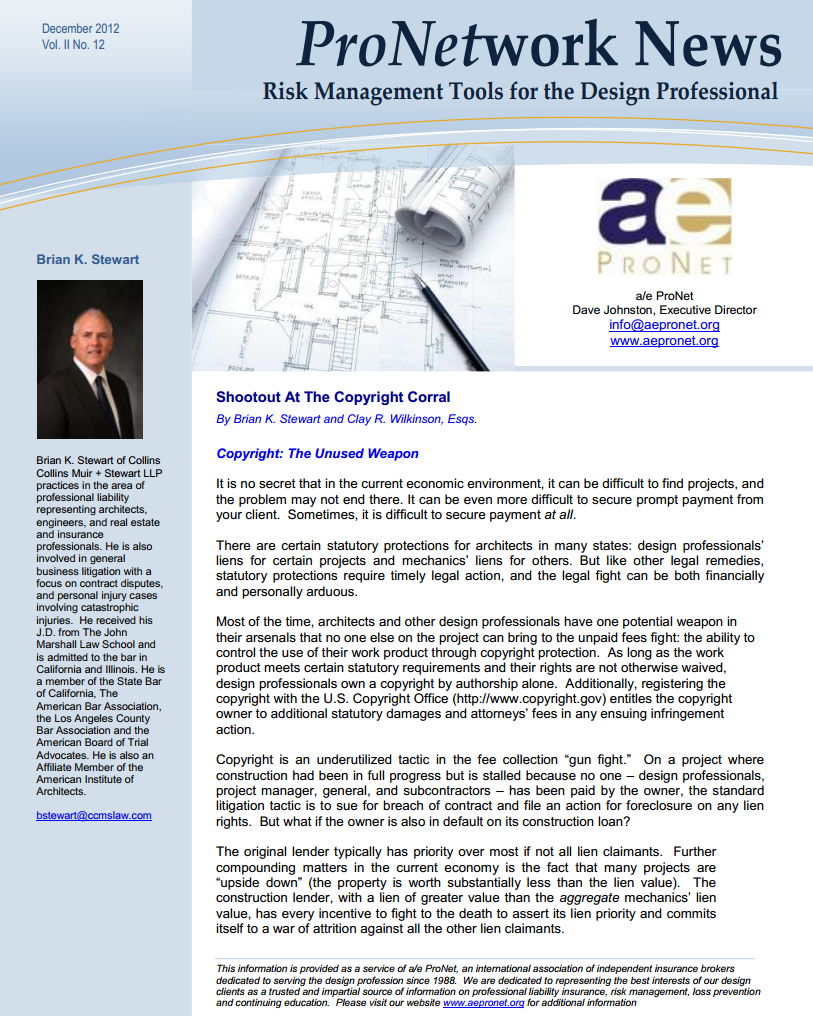 Copyright seems like a rather lofty notion. Few put copyright at the top of their list of must-haves in contract negotiations, and even fewer take the time to actually register their documents for copyright protection. But you do have copyright protections under current law. That copyright can come in handy as a risk management tool as well as leverage in a fee dispute. Unfortunately, many design professionals give away their rights vis-à-vis their contracts without a full appreciation of the implications of their actions.
Copyright seems like a rather lofty notion. Few put copyright at the top of their list of must-haves in contract negotiations, and even fewer take the time to actually register their documents for copyright protection. But you do have copyright protections under current law. That copyright can come in handy as a risk management tool as well as leverage in a fee dispute. Unfortunately, many design professionals give away their rights vis-à-vis their contracts without a full appreciation of the implications of their actions.
Copyright statutes have been on our books since the 1700s. The Copyright Act (Title 17 of the US Code) provides useful protection applicable to your practice by including pictorial, graphic and sculptural works, as well as architectural works, as copyrightable materials. Architectural works include drawings, models and the structure itself. “Arrangement of spaces and elements” are protected, but not “individual standard features.” Registering your architectural works creates a public record of the registration and is essential in an infringement action. It takes 30 minutes and $30 to complete. But even if you do not register your works, they are still protected unless you give those rights away by contract.
Copyright in Standard Design Contracts
Standard design industry contracts (e.g., AIA and EJCDC), keep the copyright with the design professional and provide for a limited license to the client/owner for use of the documents. That license is generally limited for use on the specific project only, and does not allow for transfer of that license to third parties. The design industry contracts also include an indemnity provision in the professional’s favor that mitigates risk should those documents be used or modified without proper authority. Most owner generated contracts, on the other hand, demand a transfer of copyright to the owner, and those terms are often agreed to by the professional, presumably because the professional is not fully aware of its rights or the risks involved in giving those rights away. Continue reading “Copyright Rights and Wrongs”

